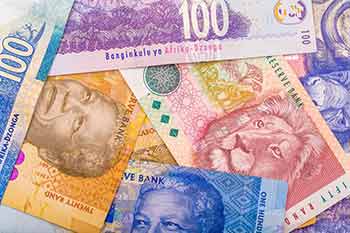The Euro to South African Rand (EUR/ZAR) exchange rate advanced on Wednesday following the release of data, which showed that inflation in South Africa fell to its lowest level in 4 years.
The Euro to South African Rand (EUR/ZAR) exchange rate climbed to a session high of 13.1589
Data published by Statistics South Africa showed that consumer price inflation in the African nation eased at a slower-than-expected pace in the second month of the year to fall to its lowest level in four years.
The country’s consumer price index rose to 3.9% on a year-on-year in February, a slower pace than January’s 4.4% climb. Economists had expected the rate to ease to 3.8%. The latest rate of inflation was the lowest level since February 2011, when price had risen 3.7%.
Prices of food and non-alcoholic beverages grew by 6.4% on an annual basis, a slightly slower pace than the 6.5% figure recorded in the preceding month. The price of clothing and footwear rose 5.8% and utilities rose by 5.6%.
The main drag on inflation as with most other nations currently was the sharp drop in oil prices. Transport prices tumbled at a faster pace of 6.3% on a year on year basis, adding to the 2.5% fall recorded in the previous month.
The inflation drop was slightly less than the drop to 3.8% that economists had anticipated, from 4.4% annually in January. The data will provide further relief to an economy that posted a near-record trade deficit of $2 billion in January and has been struggling against a weakening currency.
Despite the inflation, data being a bit of a positive for the South African economy it remains under pressure from concerns over the nation’s power supply and weak fundamentals.
The Euro on the other hand continued to receive support from Tuesday’s positive economic data, which showed that the currency bloc’s unemployment crisis eased slightly and economic sentiment rose strongly.
US Federal Reserve Meeting to Influence Rand
Investors will now turn their attention to upcoming South African retail sales data and the US Federal Reserve policy meeting.
‘The market seems quite content to stay long on US Dollars ahead of the Fed meeting in anticipation of a statement bordering on hawkish and therefore a resumption of this strong Dollar trend we have seen since the beginning of 2014,’ said an economist from Standard Bank.
If, the Federal Reserve removes a reference to remaining patient from its minutes when it begins its two daylong meeting later on Wednesday. Typically, when the Fed eliminates such language it signals that an interest rate hike will occur at either of its next two meetings.
Following this week’s meeting, the Fed will convene in June as well as September.



